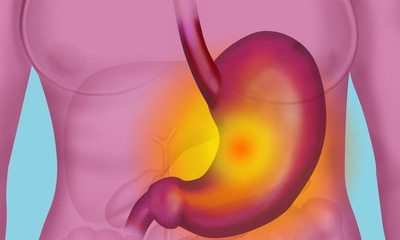
Getting a correct diagnosis of multiple sclerosis (MS) can be a challenge. In fact, a study published in May 2019 in the journal Multiple Sclerosis and Related Disorders suggested that nearly 1 in 5 people with other neurologic conditions are mistakenly diagnosed with MS.
These errors in diagnosis likely result from the fact that there is no single test that can determine an MS diagnosis conclusively. Also, not everyone has all of the common symptoms of MS, such as numbness, tingling, pain, fatigue, and heat sensitivity. And to complicate matters, the symptoms you do have may resemble those of some other conditions.
To figure out what’s causing possible MS symptoms, doctors look at your medical history, the results of a neurological exam, and an MRI — and sometimes do a spinal tap (also called a lumbar puncture), says Jack Burks, MD, a neurologist and chief medical officer for the Multiple Sclerosis Association of America. “The diagnosis can also require eliminating the possible MS mimicker diseases,” he says. That leads to an MS diagnosis by exclusion.
“Misdiagnosis in MS has been an issue that’s been talked about for 40 years,” adds Jeffrey Cohen, MD, director of experimental therapeutics at the Mellen MS Center of the Cleveland Clinic in Ohio. “And even with refinement of diagnostic criteria and the availability of technologies like MRI, it’s still a problem. There are a significant number of people getting misdiagnosed with MS in part because there’s no single test for it, like a blood test.”
Here are some of the conditions that are sometimes mistaken for multiple sclerosis:
Lyme Disease
Lyme disease is a bacterial infection transmitted through a tick bite. Early symptoms include fatigue, fever, headaches, and muscle and joint aches. Later symptoms can include numbness and tingling in the hands and feet, as well as cognitive problems, such as short-term memory loss and speech issues. If you live in an area that’s known to have Lyme disease or have recently traveled to one, your doctor will want to rule out the possibility, Dr. Burks says.
Migraine
A migraine is a type of headache that can cause intense pain; throbbing; sensitivity to light, sounds, or smells; nausea and vomiting; blurred vision; and light-headedness and fainting.
In the May 2019 study published in Multiple Sclerosis and Related Disorders, researchers from Cedars-Sinai Medical Center in Los Angeles found that migraine was the most common correct diagnosis in study subjects who had been misdiagnosed with MS, occurring in 16 percent of them.
That said, headaches — and migraines in particular — do commonly occur with MS, according to a study published in April 2016 in the journal Clinical Neurology and Neurosurgery. And per a study published in March 2019 in the journal Neurologia, they are also significantly associated with other types of pain, as well as with depression, which is very common in people with MS.
Migraines can be difficult to diagnose, and doctors use some of the same tools to diagnose the headaches as they do for MS, including taking a medical history and performing a thorough neurological examination.
Radiologically Isolated Syndrome
People with radiologically isolated syndrome don’t have symptoms of MS, but they are found to have lesions on their brain, as identified by MRI, similar to those found in people with MS. According to the MS International Federation, many but not all people with radiologically isolated syndrome will later develop progressive MS, which is why researchers believe the condition may be an early indicator of MS.
There are no current treatment guidelines for radiologically isolated syndrome. But in the May 2019 Multiple Sclerosis and Related Disorders study, up to 10 percent of people misdiagnosed with — and being treated for — MS in fact had radiologically isolated syndrome.
Spondylopathies
Spondylopathies are a collection of disorders of the vertebrae that usually involve inflammation. An example is ankylosing spondylitis. Symptoms of these disorders that overlap with those of MS include joint pain and fatigue.
In the Cedars-Sinai research reported in May 2019, as many as 7 percent of MS misdiagnoses were really spondylopathies.
Neuropathy
Neuropathy, or nerve damage, can also be misdiagnosed as MS, according to the Cedars-Sinai study. In fact, 7 percent of people with neuropathy in the study were diagnosed with MS in error.
Neuropathy usually refers to “peripheral neuropathy,” or damage to the nervous system outside the brain and spinal cord (which make up the central nervous system). Peripheral nerves connect the brain and spinal cord to the rest of the body.
Peripheral neuropathy is particularly common in people with diabetes, because high blood glucose levels damage the peripheral nerves.
Similar to people with MS, people with neuropathy may experience loss of coordination, muscle weakness, or difficulty walking or moving their arms or legs. However, there are several kinds of neuropathy — sensory, motor, and autonomic — each with their own set of symptoms, many of which differ from the common symptoms of MS.
Conversion and Psychogenic Disorders
Conversion and psychogenic disorders are conditions in which psychological stress is converted into a physical problem — such as blindness or paralysis — for which no medical cause can be found. In a study published in September 2016 in the journal Neurology, 11 percent of subjects definitely or probably misdiagnosed with MS actually had a conversion or psychogenic disorder.
Neuromyelitis Optica Spectrum Disorder (NMOSD)
NMOSD is an inflammatory disease that, like multiple sclerosis, attacks the myelin sheaths — the protective covering of the nerve fibers — of the optic nerves and spinal cord. But unlike MS, it usually spares the brain in its early stages. Symptoms of NMOSD can be similar to MS but can also include sudden vision loss or pain in one or both eyes, numbness or loss of sensation in the arms and legs, difficulty controlling the bladder and bowels, and uncontrollable vomiting and hiccups.
Treatments for MS are ineffective for and can even worsen NMOSD, so getting an accurate diagnosis is extremely important. A blood test known as the NMO IgG antibody test can help to differentiate between MS and NMOSD.

Lupus
Lupus is a chronic autoimmune disorder that, like MS, affects more women than men. It can cause muscle pain, joint swelling, fatigue, and headaches. The hallmark symptom of lupus is a butterfly-shaped rash covering the cheeks and bridge of the nose, but only about half of people with lupus develop this rash. There is no single diagnostic test for lupus, and because its symptoms are similar to those of many other conditions, it is sometimes called “the great imitator.”
Rheumatologists (physicians specializing in diseases of the muscles and joints) typically diagnose lupus based on a number of laboratory tests and the number of symptoms characteristic of lupus that a person has.
Stroke
A stroke occurs when a portion of the brain stops receiving a steady supply of blood, and consequently doesn’t get the oxygen and nutrients it needs to survive. Symptoms of a stroke generally evolve rapidly and include loss of vision; loss of feeling in the limbs, usually on one side of the body; difficulty walking; and difficulty speaking — all of which can also be signs of an MS flare, or exacerbation.
The age of the person experiencing the symptoms may help to pin down the correct diagnosis. “While MS can occur in 70-year-olds, if the person is older, you tend to think of stroke, not MS,” Burks says. A stroke requires immediate attention; if you think you’re experiencing a stroke, call 911.
Fibromyalgia
Fibromyalgia and MS have some similar symptoms, including headaches, joint and muscle pain, numbness and tingling of extremities, memory problems, and fatigue. Like MS, fibromyalgia is more common in women than in men. But unlike MS, fibromyalgia does not show up as brain lesions on an MRI.
Sjögren’s Syndrome
Sjögren’s syndrome is another autoimmune disorder, and the symptoms of many autoimmune disorders overlap, Burks says. Sjögren’s causes fatigue and musculoskeletal pain and is more common in women than in men. But the telltale signs are dry eyes and dry mouth, which are not associated with MS.
“Fatigue and musculoskeletal pain are common symptoms in MS, but they’re also common symptoms of a lot of other conditions,” Dr. Cohen adds.

























